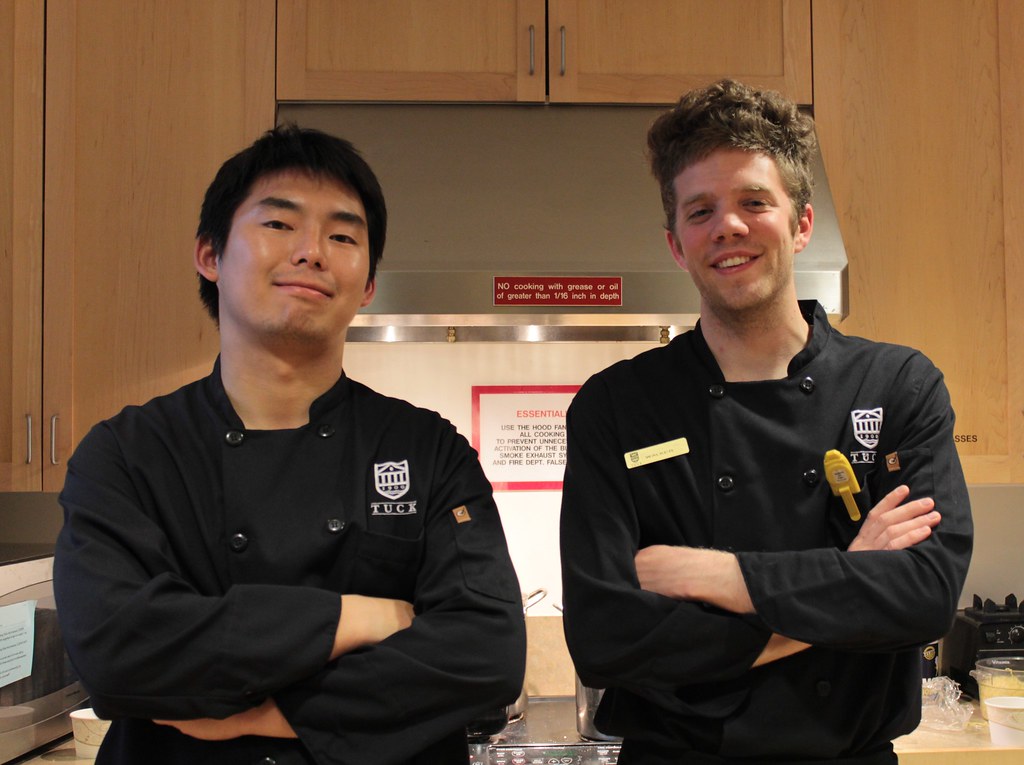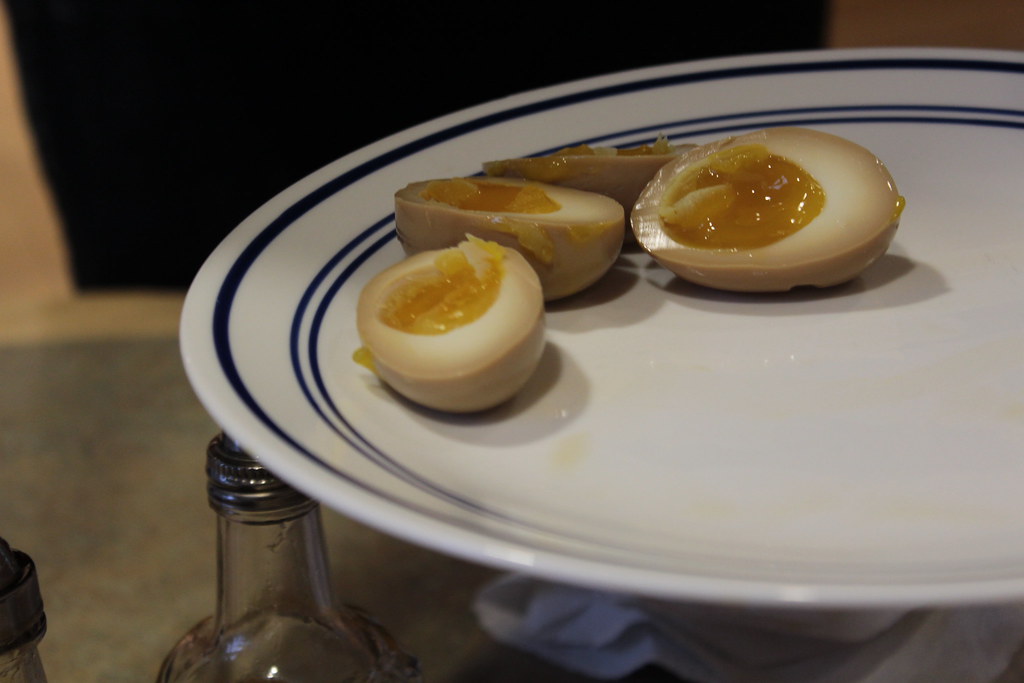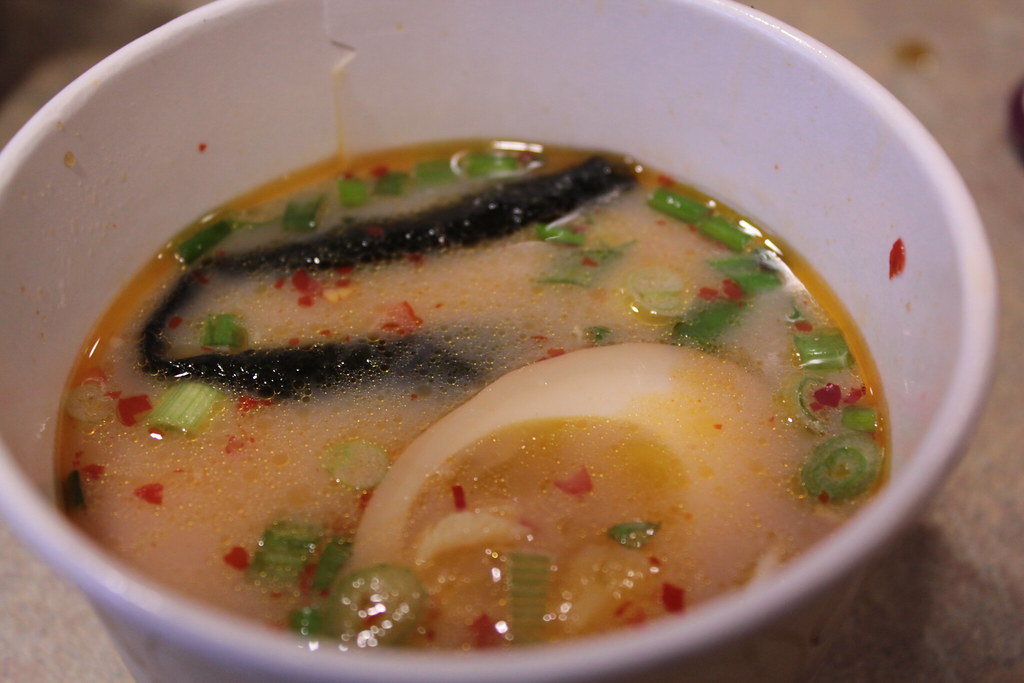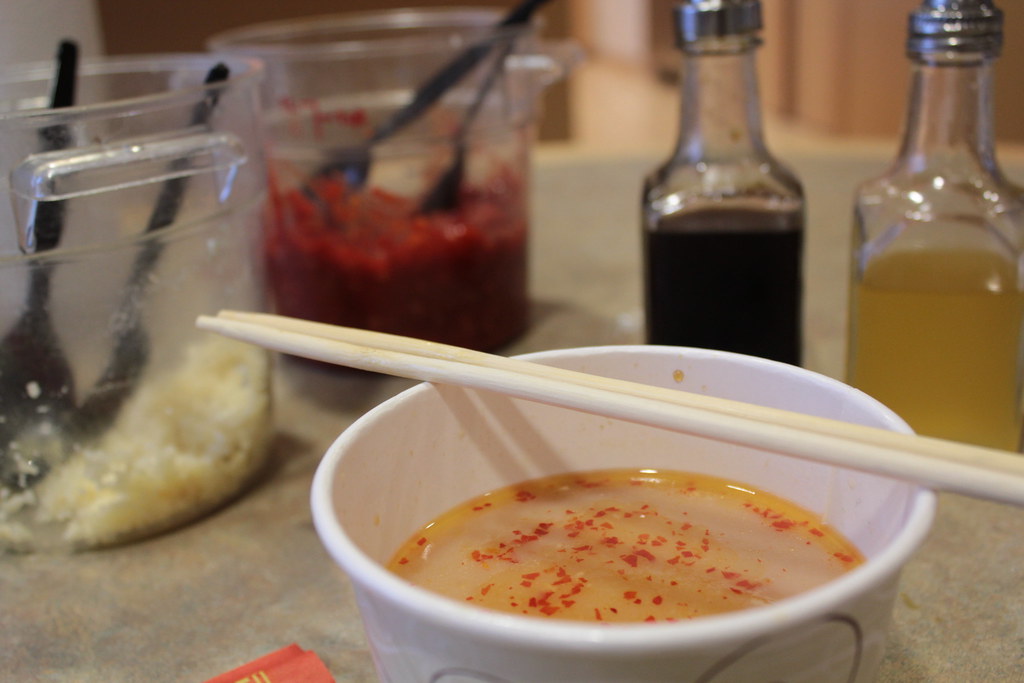Spoon University members participated in a behind the scenes ramen seminar at the Tuck Business School, which delved into the intricacies of the art of ramen eating. Besides enlightening our taste buds, Yuto Tago and Jorgen Peterson explained the idea behind their start-up business Ramendo, which revolves around popularizing quality, genuine Japanese-style ramen stateside.
Jorgen comes from a background in chemistry, time spent abroad in Japan as well as time working for Boston-based ramen restaurant Yume Wo Katare. Jorgen credits an insatiable craving for ramen day and night as a key component in his and Yuto’s collaboration. Yuto, originally from Tokyo, was inspired to start Ramendo by an Introduction to Entrepreneurship class. Tragically, “there is no good ramen in Hanover; one has to go to either New York or Boston.” Ramendo strives to fill a ramen market for an American palette, starting right here in Hanover and expanding to other metropolitan areas that don’t have nearly enough ramen restaurants.
After a brief history lesson on how ramen came to Japan as a wheat noodle from China, which the Japanese then customized to their liking, Spoon members embarked on creating their own bowl of ramen. As we soon found out, a bowl of ramen can be tailored and personalized in a variety of ways through the use of various garnishes such as pork, soy sauce, chicken, eggs, chili, seaweed and more — the possibilities are limitless.
Ramen has 5 components: the soup or broth (usually chicken or pork based, or even miso based), the base sauce (incorporates a savory umami flavor along with smokiness), the flavor oils (which adds a chili, garlic or ginger flavor), the noodles (which vary in texture and chewiness) and lastly, the toppings (for an added aesthetic and flavor boost). Every participant was given a bowl of soup, but then experimented with different types of other components, truly experiencing how every step is intricately compartmentalized and layered differently.
The experience educated participants about the different types of ramen noodles: can you tell the difference between a fatter, chewier Tokyo noodle and the leaner, thinner Hakata noodle? We also learned of how secretive ramen chefs are about their base sauce, an important ingredient that differentiates flavor from one bowl to the next. Common elements include soy sauce and kelp, but a ramen chef never reveals trade secrets.
The best part was learning not just how ramen is made, but also the art of consuming it. While slurping may be thought of as impolite, it is a must for eating ramen, and the best method of tasting both the soup and noodle simultaneously. Whether you’ve never had an authentic ramen experience or are striving to consume 2,000+ bowls of ramen like Yuto, a steaming bowl of noodles is available at Tuck for a limited time until the end of this term.
Location: Byrne Hall, Tuck Mall, Hanover, NH 03755
Hours of Operation: Tue. 11am-2pm, 5:30pm – 7:30pm






